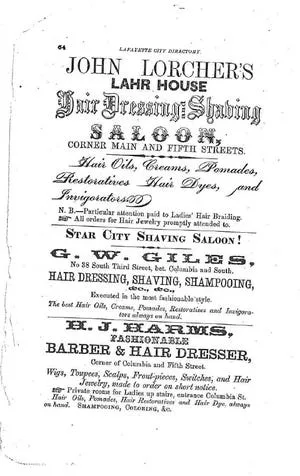LAFAYETTE, Ind. — The Lafayette pioneer community offered its small African American population unskilled work as cooks, whitewashers and laborers. Enterprising individuals, however, thwarted 19th-century expectations and prejudices.

In 1846, the Lafayette census listed only one white barber, but by 1850 sixteen Black barbers controlled the tonsorial art business in the city. Throughout most of the 19th century, Black barbers adjusted to competition from white barbers, and succeeded in this small business venture.
In the early 1800s, barbers focused on shaving heads and faces and catered to affluent customers. Successful barbers possessed some education, business skills, and were polite, courteous and sociable. Samuel B. Webster, a native of Ohio, operated a profitable hairdressing business in Lafayette for 11 years. The Lafayette Courier in 1851 recognized him as a popular “fashionable barber” and an industrious and respected citizen.

Lafayette’s Black population continued their interest in the barber business after the Civil War. Establishing Black barbers, like Jeneral Tootle, who apprenticed and mentored younger men. Barbers located their shops on well-traveled downtown streets. Wilson Giles enlarged his new shop into a stylish “salon” or “saloon.” He attracted customers with new services and hair products.
However, by the turn of the century, strained racial relations of the Jim Crow era would curtail the Black barber and white client association.

